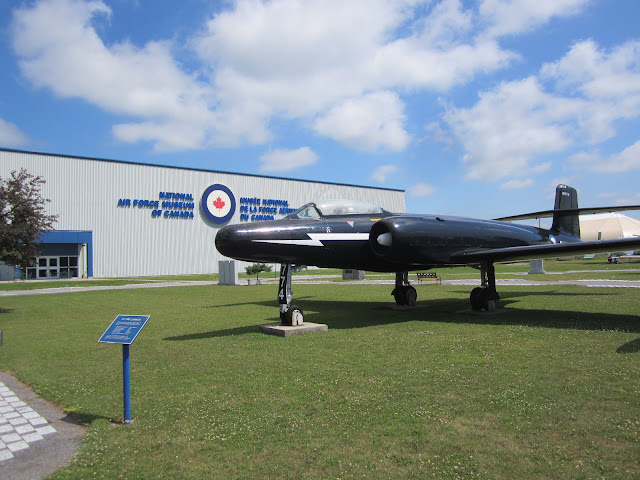Just had to stop in to see the National Air Force Museum of Canada here in Trenton. The museum is fairly new, and has lots of room for additional displays. All were well done. That's a CF-100 interceptor from the late 50's.
The show piece of the museum is only remaining Halifax bomber in the world. This particular variant was used to drop supplies to the Resistance. All the guns were removed except for the quad .303s in the tail. The bomb bay was fitted to drop containers of supplies by parachute. The Halifax was a rugged plane, but had teething problems early on. Insufficient sized rudders caused some handling problems at extreme attitudes. It was under-powered with the original 1200 hp Rolls Royce Merlin engines. The addition of 2000 hp Hercules radial engines allowed the plane to meet it's designed performance numbers.
This particular plane had been built in February, 1945. It was shot down in Norway in April of 1945, after 50 hours of operation. The pilot ditched in a lake, with only the tail gunner surviving. He was captured by the Germans, then released two weeks later at the end of the war. The plane lay in it's watery grave for 50 years before being resurrected and shipped to Canada for rebuilding. It was restored to flying condition. After engine runs, gear swings, and system checks, it was placed in it's current location and the end wall of the building was installed. They still run all the electrical equipment every month.
This was a replica of Canada's first military aircraft. Powered by an O-X 5 pusher engine, the original was sent to France in 1914 to help the army, but was never used. The original Canadian Air Force had two pilots and one mechanic to crew it's only aircraft.
A rather exotic design for 1914.
Some of the outside display.
I had to peek through the back fence to see the in-work projects. Nice looking Hawker Hurricane,
A late model Spitfire just back from the paint shop.








No comments:
Post a Comment